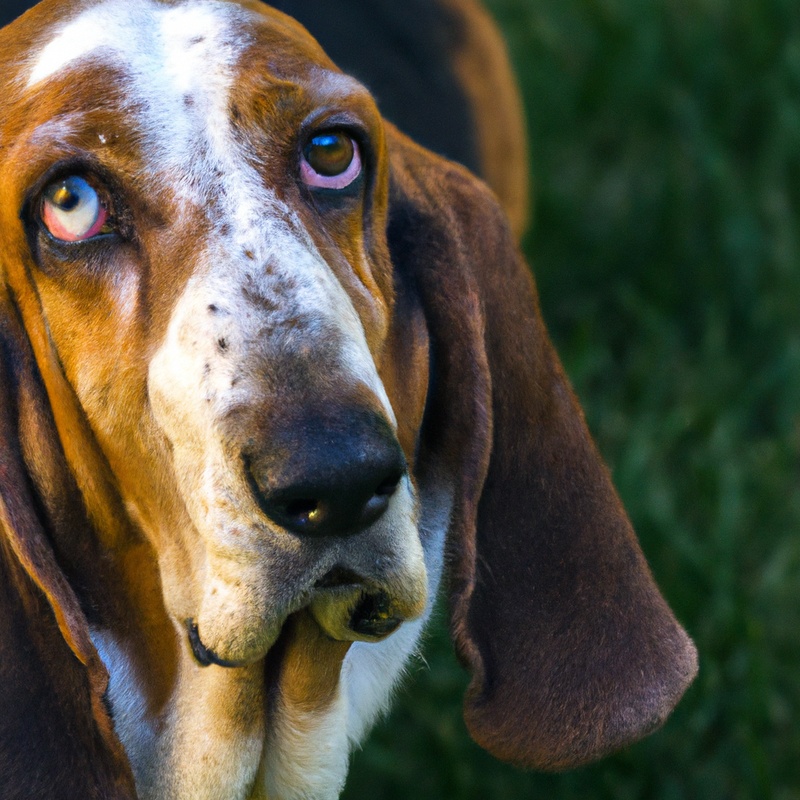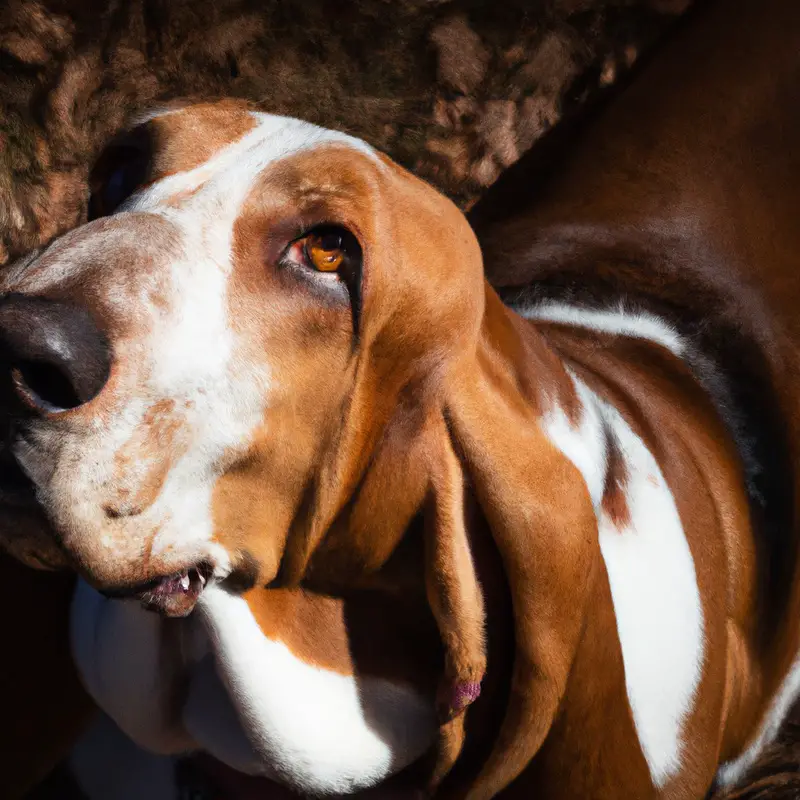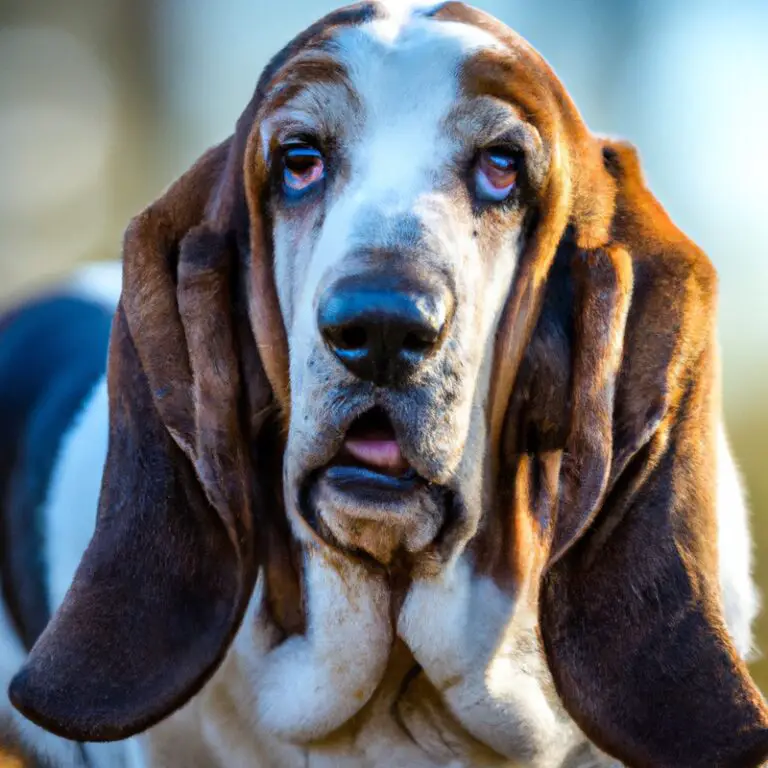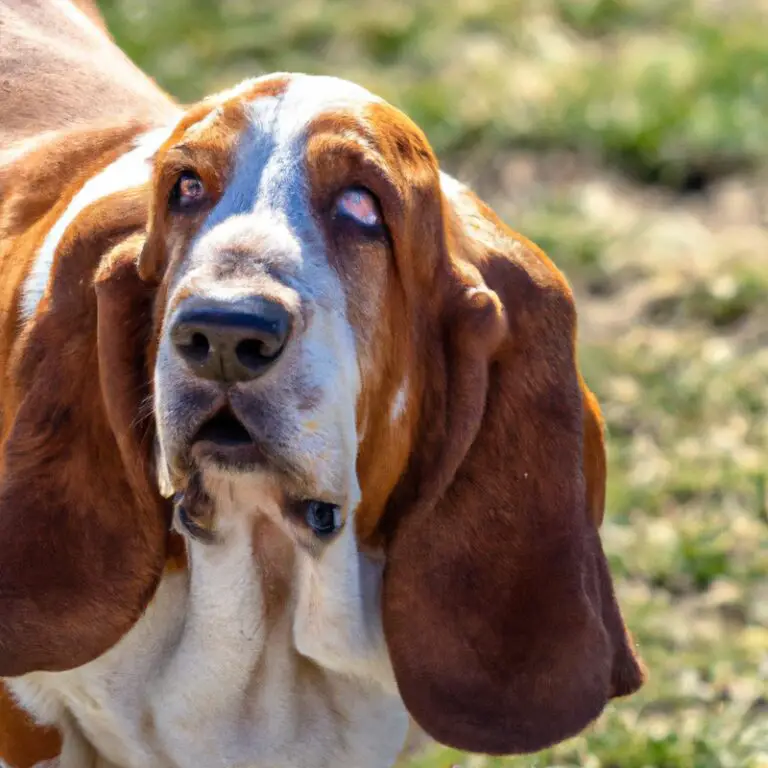How Do Basset Hounds Behave Around Children They Don’t Know?
Key Takeaways:
- Basset Hounds tend to be friendly and gentle around children they don’t know.
- They may be cautious and take some time to warm up to unfamiliar children.
- Basset Hounds generally have a patient and tolerant temperament.
- Proper supervision is still necessary when introducing Basset Hounds to new children.
Have you ever wondered how Basset Hounds behave around children they don’t know? As an expert in canine behavior, I’m here to shed some light on this topic for you.
Basset Hounds are known for their gentle and loyal nature, but like any dog, their behavior can be influenced by various factors.
In this blog article, we will explore the temperament and characteristics of Basset Hounds, the factors that can affect their behavior with unfamiliar children, and their typical reactions in such situations. Additionally, we’ll discuss how to introduce Basset Hounds to new children, teach children to interact with them safely, and build a strong relationship between these adorable hounds and the children in their lives.
So, let’s dive in and discover the fascinating dynamics between Basset Hounds and children!
| Behavior | Description |
| Curiosity | Basset Hounds are generally curious by nature and may approach children they don’t know to investigate. |
| Shyness | Some Basset Hounds may be initially shy or reserved around unfamiliar children and may take time to warm up to them. |
| Gentle nature | Basset Hounds are generally known for their gentle and docile nature, which makes them generally well-suited for interactions with children. |
| Patience | Basset Hounds are patient dogs and can tolerate being touched or hugged by children, provided they are not excessively rough. |
| Tendency to drool | Due to their droopy jowls, Basset Hounds may have a tendency to drool, which might not be suitable for children who are extremely sensitive. |
Understanding Basset Hound Behavior
Basset Hound temperament and characteristics
Basset Hounds are known for their laid-back and gentle temperament. They are typically friendly, affectionate, and good-natured dogs.
Bassets have a strong sense of smell and love to follow scents, so they may be a bit stubborn and independent at times.
They are generally calm and patient, making them great companions for families and children. Bassets are not usually aggressive, but like any dog, they should be socialized and trained properly to ensure good behavior.
It is important to note that individual temperament can vary, so each Basset Hound may have its own unique personality traits.

Factors influencing Basset Hound behavior
Many factors can influence a Basset Hound’s behavior, including genetics, environment, socialization, and training. Basset Hounds have a sweet and gentle nature, but they can be stubborn at times.
They are known to be friendly and get along well with people and other animals.
However, their hound instincts can make them prone to chasing small animals or following interesting scents. Proper socialization and training from a young age can greatly shape their behavior and help them become well-rounded and adaptable companions.

Common behavioral traits of Basset Hounds
Basset Hounds have some common behavioral traits that make them unique and lovable. Here are a few key characteristics of Basset Hound behavior:
- Gentle and Affectionate: Basset Hounds are known for their gentle nature and loving disposition. They enjoy being around their family members and crave affection.
- Relaxed and Easygoing: These dogs have a laid-back temperament and tend to be quite easygoing. They are not typically hyperactive or high-strung.
- Independent Thinkers: Basset Hounds can be a bit stubborn at times. They like to do things at their own pace and may not always respond immediately to commands.
- Good with Children: Bassets generally get along well with children. They are patient and tolerant, which makes them great companions for kids.
- Scent-Driven: Basset Hounds have a keen sense of smell and are often motivated by their nose. They may follow scents or become engrossed in sniffing, so be prepared for their tracking instincts to kick in.
- Moderate Exercise Needs: While Bassets enjoy short walks and playtime, they are not overly active dogs. They are content with more relaxed activities and may prefer lounging around the house.
Remember, each Basset Hound may exhibit slightly different behaviors, so it’s important to understand and appreciate their individual personalities.

Basset Hounds and Children: What to Expect
Basset Hound’s general attitude towards children
Basset Hounds generally have a friendly and gentle attitude towards children. They are known for their patient and tolerant nature, making them a good choice for families with kids.
Bassets are usually calm and laid-back, making them less likely to be easily provoked or aggressive towards children.
However, it’s important to remember that every dog is an individual, and their behavior can vary. It’s always best to supervise interactions between Basset Hounds and children to ensure safety for everyone involved.
Factors affecting Basset Hound’s behavior with unfamiliar children
To understand the factors that can affect a Basset Hound’s behavior with unfamiliar children, there are a few key things to consider.
First, a Basset Hound’s temperament and previous experiences with children can greatly influence their behavior.
Some Basset Hounds may be naturally more tolerant and gentle, while others may be more reserved or wary.
Socialization plays a crucial role in shaping a dog’s behavior, so if a Basset Hound hasn’t had positive interactions with children in the past, they may feel unsure or anxious around them.
Additionally, the child’s behavior and approach can also impact how a Basset Hound responds.
If a child is loud, rough, or aggressive, it’s more likely to make the dog uncomfortable or fearful.
Providing a calm and positive environment for both the dog and the child is essential for fostering a safe and harmonious interaction.
Typical reactions of Basset Hounds towards unknown children
Basset Hounds typically exhibit friendly and gentle reactions towards unknown children.
As a breed known for their calm and patient nature, Basset Hounds often approach children with curiosity and a docile demeanor.
They may sniff, wag their tails, and even lean against the child for attention and affection.
Basset Hounds are generally tolerant and rarely show signs of aggression towards children, making them a suitable choice for families with kids.
However, it’s always important to supervise interactions between Basset Hounds and children to ensure safety and prevent any accidental harm.
Introducing Basset Hounds to New Children
Supervised introductions and gradual socialization
Supervised introductions and gradual socialization are important when introducing Basset Hounds to new children.
Start by supervising any initial interactions between the dog and child.
Allow them to meet in a neutral and calm environment.
Ensure both the dog and child feel comfortable and safe.
Gradually increase the amount of time they spend together, always observing their behavior.
Provide positive reinforcement and rewards for good behavior.
It’s essential to create a positive and relaxed atmosphere during these introductions to build trust and a strong bond between the dog and child.
Ensuring a positive environment for interactions
Creating a positive environment for interactions between Basset Hounds and children is essential for a safe and enjoyable experience. I recommend following these simple guidelines:
- Create a calm atmosphere: Ensure that the environment is quiet and free from distractions. Loud noises or sudden movements can startle the Basset Hound and cause unnecessary stress.
- Provide a safe space: Make sure the interaction takes place in a secure area, such as a fenced backyard or a quiet room. This will give both the dog and the child a sense of security.
- Supervise the interaction: Adult supervision is crucial to ensure the safety of both the child and the dog. Stay nearby to intervene if necessary and guide the child on appropriate behavior around the Basset Hound.
- Encourage gentle and respectful interactions: Teach the child to approach the Basset Hound calmly and gently. Show them how to pet the dog properly, avoiding sensitive areas like the ears or tail.
- Reward positive behavior: When the child and the Basset Hound interact in a positive and calm manner, reward both with praise and treats. This will reinforce good behavior and create a positive association for both parties.
Tips for making the introductions smooth and safe
When introducing your Basset Hound to new children, it’s important to create a smooth and safe environment. Here are some tips to consider:
- Start with supervised introductions: Always have an adult present to ensure the safety of both the child and the dog.
- Gradual socialization: Allow the Basset Hound to slowly become familiar with the child’s presence, using positive reinforcement and rewards.
- Set the scene: Choose a calm and quiet area for the introduction, free from distractions or sources of stress.
- Allow the dog to approach: Let the Basset Hound approach the child at their own pace, giving them the choice to initiate contact.
- Teach proper petting: Instruct the child to gently stroke the dog’s body, avoiding sensitive areas like the ears or tail.
- Reward good behavior: Praise and reward both the Basset Hound and the child for positive interactions and calm behavior.
Remember, every dog and child is unique, so take the time to observe their interactions and make adjustments as necessary to ensure a safe and enjoyable experience for all.
Teaching Children to Interact with Basset Hounds
Educating children about appropriate behavior around dogs
When it comes to educating children about appropriate behavior around dogs, it’s important to teach them some key rules. Firstly, they should approach dogs calmly and give them space.
Secondly, children should always ask the dog’s owner for permission before petting or approaching a dog they don’t know.
Thirdly, children should learn to read a dog’s body language and know when a dog is uncomfortable or scared. By teaching children these basic guidelines, we can help them interact safely and respectfully with dogs.
Teaching children to approach and interact with Basset Hounds
Teaching children how to approach and interact with Basset Hounds is important for their safety and for fostering positive relationships with these dogs. One key rule is to always approach slowly and calmly, giving the dog a chance to sniff and become familiar with the child.
It’s crucial to teach children to avoid sudden movements or loud noises that may startle the dog.
Encouraging gentle petting and avoiding pulling or tugging on the dog’s ears or tail is also important. Remind children to respect the dog’s boundaries and to always ask for permission from the dog’s owner before interacting with the Basset Hound.
Key rules to follow when children and Basset Hounds interact
When children and Basset Hounds interact, it’s important to follow these key rules:
- Teach children to approach calmly and slowly: Rushing towards a Basset Hound can be intimidating, so it’s best to approach them gently.
- Encourage gentle touch: Teach children to pet the Basset Hound gently, avoiding rough handling or pulling on their ears or tail.
- Avoid sudden movements and loud noises: Basset Hounds can be sensitive to sudden movements or loud noises, so it’s best for children to stay calm and quiet around them.
- Never disturb a sleeping or eating Basset Hound: Teach children to respect a Basset Hound’s boundaries and give them space when they are resting or eating.
- Always supervise interactions: An adult should always be present when children and Basset Hounds are together to ensure safety and proper behavior.
Safety Measures and Precautions
The importance of adult supervision
Adult supervision is crucial when children and Basset Hounds interact.
It ensures the safety and well-being of both parties involved.
By having a responsible and attentive adult present, potential incidents can be prevented or quickly addressed.
Adults can guide and teach children about appropriate behavior with dogs, set boundaries, and identify signs of discomfort or stress in the Basset Hound.
This helps create a positive environment for the interaction and fosters a safe and enjoyable experience for both children and Basset Hounds.
Teaching children about boundaries and respect for the dog
Teaching children about boundaries and respect for the dog is essential for their safety and the dog’s well-being.
Firstly, it’s important to explain to children that dogs have personal space and may not always want to be touched or hugged.
Secondly, they should understand that pulling tails or ears can hurt the dog and make them upset.
Thirdly, teach children to approach dogs gently and ask for permission before petting them.
And lastly, instruct them to never disturb a dog when they are eating or sleeping.
Identifying warning signs and signs of discomfort in the Basset Hound
Identifying warning signs and signs of discomfort in a Basset Hound is key to ensuring their well-being around children.
Watch out for body language cues like a stiff posture, raised hackles, or a tucked tail, as it might indicate fear or aggression.
Growling, barking, or snapping are also signs of unease.
A Basset Hound may also try to retreat or hide when feeling uncomfortable.
Remember to respect their boundaries and give them space if they seem uneasy.
It’s crucial to prioritize the safety and comfort of both the dog and the children.
Building a Strong Relationship Between Basset Hounds and Children
Encouraging positive experiences and associations
Encouraging positive experiences and associations between Basset Hounds and children is essential for building a strong relationship. One way to do this is by allowing supervised interactions and gradual socialization.
It’s also important to create a positive environment for interactions, ensuring that both the child and the Basset Hound feel safe and comfortable.
Educating children about appropriate behavior around dogs and teaching them how to approach and interact with Basset Hounds can also contribute to positive experiences. Involving children in the care and training of the Basset Hound fosters empathy and responsibility towards animals.
Involving children in the care and training of the Basset Hound
Involving children in the care and training of a Basset Hound is a great way to foster a strong bond between them.
Children can help with tasks like feeding, grooming, and walking the dog under adult supervision.
This not on ly teaches responsibility and empathy towards animals, but also allows children to develop a sense of ownership and pride in caring for their furry friend.
Additionally, involving children in training sessions can be a fun and educational experience for both the child and the dog, as they learn commands and tricks together.
Fostering empathy and responsibility in children towards animals
Fostering empathy and responsibility in children towards animals is essential for their emotional development and the well-being of animals. One way to achieve this is by encouraging children to interact with animals in a compassionate and respectful manner.
Teaching them about animal welfare and the importance of kindness towards animals can help instill empathy.
Involving children in the care and feeding of animals can also promote a sense of responsibility and understanding of the needs of animals. Additionally, reading books or watching educational programs about animals can further enhance their empathy and knowledge.
Final Verdict
Basset Hounds can display a variety of behaviors when it comes to interacting with children they don’t know. While their general temperament is typically calm and friendly, individual traits can be influenced by factors such as socialization and past experiences.
It is important to supervise introductions and create a positive environment, ensuring that both the Basset Hound and children feel safe and comfortable.
Educating children about appropriate behavior around dogs, teaching them to approach and interact respectfully, and setting boundaries are crucial for the safety and well-being of both parties. By building a strong relationship based on positive experiences and involving children in the care and training of the Basset Hound, a harmonious and loving bond can be formed between them.
Remember, it is always essential to prioritize safety, respect, and empathy when it comes to interactions between Basset Hounds and children they don’t know.






